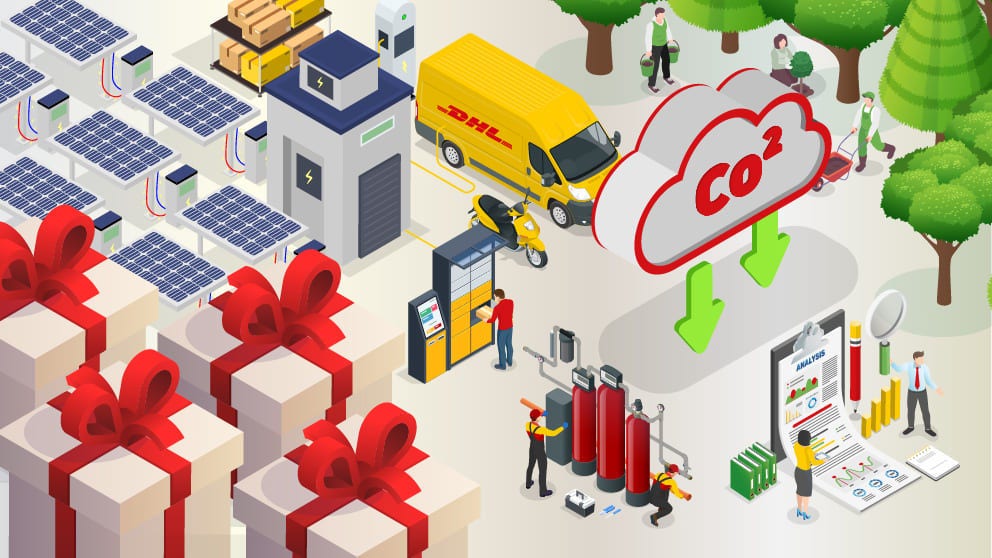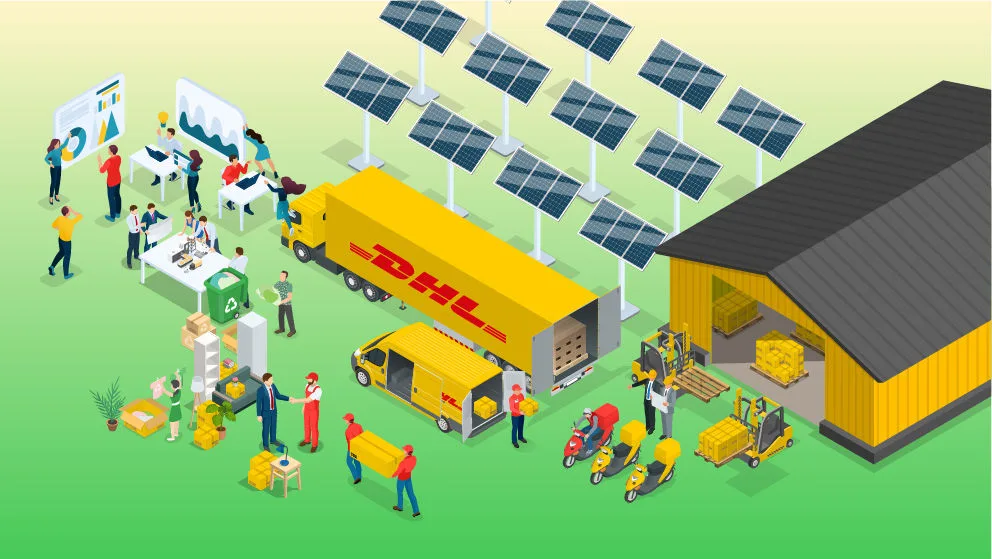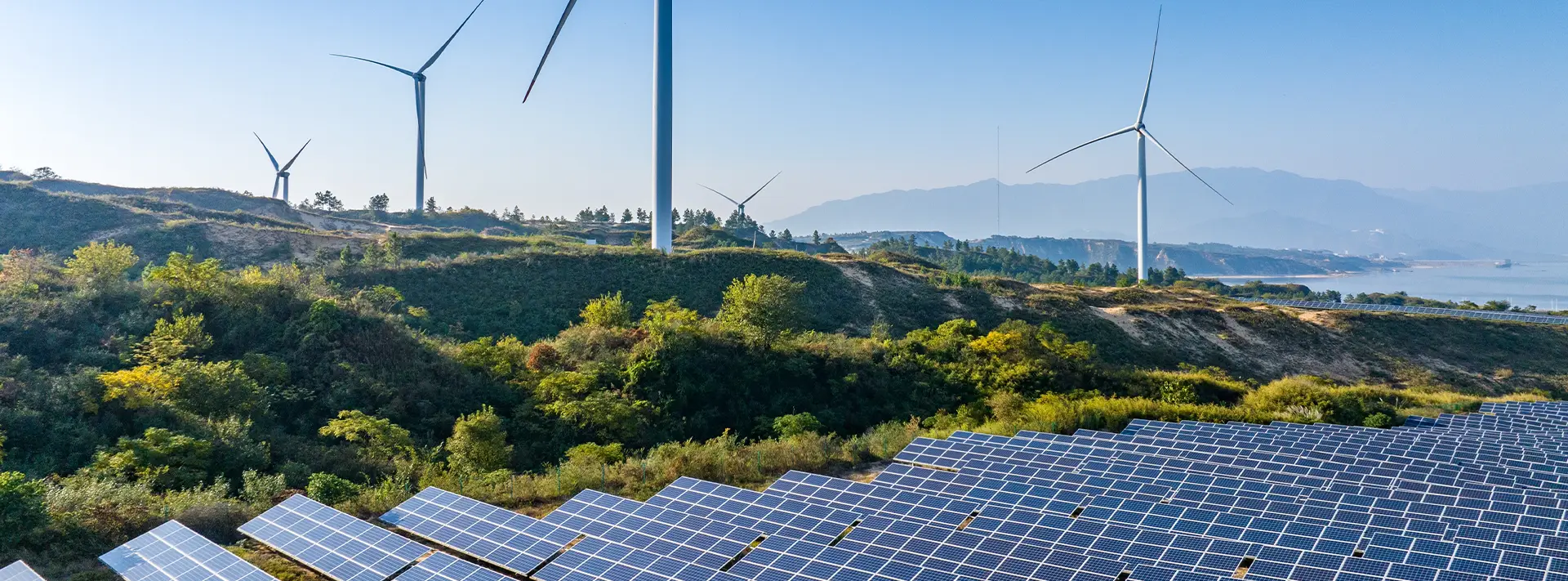
Carbon Footprint Explained: Reduce Your Environmental Footprint with DHL
According to Our World in Data, since the Industrial Revolution, humans have contributed an estimated 1.5 million tonnes of carbon dioxide to the atmosphere, significantly increasing the global carbon footprint. From famines to air pollution, the impact is evident on our beloved Earth. The same institution also reports that, in Hong Kong, the per capita carbon footprint from carbon emissions has declined substantially, dropping from 5.6 tonnes in 2019 to 4.22 tonnes in 2021.
Carbon footprint Explained
Carbon footprint refers to the total volume of greenhouse gases emitted, measured in carbon dioxide units. In the business sense, it is an organisation's total emissions, otherwise called corporate carbon footprint.
From its definition, it is clear why carbon footprint is bad — the greater your footprint, the larger adverse impact you make on the environment. As a business owner, implementing solutions to reduce the effects of global warming, be they small or large scale, can introduce a lasting impact on the environment.
A business’ carbon footprint can be influenced by several factors. These include:
- Continuous reliance on costly fossil fuels to generate power
- Heavy electricity usage
- Lack of carbon-neutral operation processes (i.e. transportation, office buildings & warehouses, etc.)
McKinsey also noted that the supply chain can account for over 80% of greenhouse gas emissions. This makes it evident that the vendors you work with also have a significant part to play in your overall corporate carbon footprint.
How does carbon footprint impact a business?
If you’re thinking why businesses should reduce their carbon footprint, consider the impact it would make:
1. Economic impact of corporate carbon footprint
When you have a high corporate carbon footprint, it is evident that you are paying more for energy. Instead of unnecessary expenditure, channel this capital to fund other areas of your business that matter more, from revenue-making developments to sustainability projects.
2. Political impact of corporate carbon footprint
In Hong Kong, environmental law is managed across specific statutes. For instance, the Air Pollution Control Ordinance regulates air quality while the Motor Vehicle Idling (Fixed Penalty) Ordinance prohibits idle vehicles from running to reduce air and noise pollution. The Environmental Impact Assessment Ordinance oversees the permits involved to carry out certain projects to manage adverse environmental effects. Enforcements are typically performed by the Environmental Protection Department, with sanctions that include fines and cancellations of permits. Complying with such regulations is necessary to operate lawfully in Hong Kong.
3. Social impact of corporate carbon footprint
The Ethical Consumption Movement and zero-waste campaign in Hong Kong are clear indicators that the society is gearing towards more sustainable purchasing practices. Choosing to engage with more sustainable fashion brands and environmentally-friendly companies, for instance, shows that consumers are becoming more discerning and ethically-driven about their consumption choices.
Actively finding ways to reduce your corporate carbon footprint is one way to establish yourself as an eco-friendly brand. Setting yourself targets to achieve zero carbon footprint in the course of your business can also set yourself apart from a competitive market. Ethically conscious consumers would be more willing to purchase from you. On the contrary, they may boycott your brand if they find your products compromising the health of the environment.
Reduce corporate carbon footprint with Insetting and Offsetting
Carbon emissions are critical to a company's success or failure. Whether it’s dedicating time to conducting a thorough carbon audit or actively developing emission reduction plans, only through genuine implementation and fulfilling corporate social responsibility can a company ensure its sustained growth and prosperity. In the pursuit of emission reduction, two distinct yet complementary approaches have emerged: "Carbon Offsetting" and "Carbon Insetting." Companies can leverage these to more comprehensively manage their carbon footprint and contribute to achieving global net-zero carbon emission goals.
Carbon Offsetting
The "Carbon Offsetting" approach involves investing in environmental protection projects to compensate for carbon emissions that a company cannot eliminate. Key methods include:
Afforestation or forest protection programs: Absorbing atmospheric carbon dioxide through reforestation and ecological restoration.
Renewable energy initiatives: Funding the development and construction of clean energy sources such as wind and solar power, indirectly reducing global greenhouse gas emissions. While carbon offsetting does not directly reduce emissions from a company’s own operations, it supports global emission reduction efforts by funding carbon reduction projects. This provides a viable strategy for achieving carbon neutrality, particularly for industries with unavoidable emission constraints (such as certain logistics and transportation sectors), making carbon offsetting an essential complementary tool for reaching carbon neutrality.
Carbon Insetting
"Carbon Insetting" involves directly integrating emission reduction measures into a company’s operations and supply chain, embedding sustainability principles at the core of its business. Common practices include:
Adopting high-energy-efficiency equipment: Replacing traditional fluorescent lights with LED bulbs, which save electricity and have a longer lifespan.
Recycling office supplies: Extending the lifespan of laptops, monitors, office furniture, etc., or donating and selling idle assets to avoid resource waste.
Green supply chain management: Prioritizing partnerships with logistics and warehousing providers that emphasize environmental responsibility and requiring upstream and downstream partners to adopt sustainable practices.
Smart logistics and transportation: Reducing fuel consumption through route optimization, transitioning to electric or low-emission vehicles, and implementing energy-saving operations in warehouses and distribution centers. Through carbon insetting, companies can not only effectively reduce their carbon footprint but also enhance operational efficiency and save costs, truly integrating environmental commitments into daily operations.
Reduce corporate environmental footprint with DHL GoGreen PlusExpress
DHL is investing €7 billion to reduce carbon emissions. It is building an energy-efficient fleet and plans to electrify 60 percent of its last mile delivery services by 2030. The company will also adopt sustainable aviation fuel (SAF) and has ordered its first all-electric cargo aircraft.
By 2030, more than half of DHL’s facilities will run on renewable energy. Advanced carbon neutral building and engineering technologies will help further shrink both DHL’s and its customers’ carbon footprints. Through DHL Express’s GoGreen Net Zero service, companies can invest in certified environmental projects to offset emissions, audit carbon during transit, and receive end to end footprint reports using industry-standard metrics for land, sea and air.
To meet stricter environmental requirements, DHL has launched GoGreen Plus specifically for Hong Kong businesses. This programme uses SAF to reduce Scope 3 emissions and integrates seamlessly with the MyDHL+ platform. Companies of all sizes can cut carbon without compromising service quality, enhance their brand reputation and address growing environmental responsibilities. Open a DHL Express business account today to cover your import and export needs and help build a more sustainable future.
Open a DHL business account and step into a new era of green logistics together!
Open a business account today and leverage DHL Express' services for your import-export needs. By shipping with DHL Express, you're not just meeting your logistics requirements but actively embracing a shift towards a more sustainable future.
Open a DHL Express business account and opt for GoGreen Plus!






















